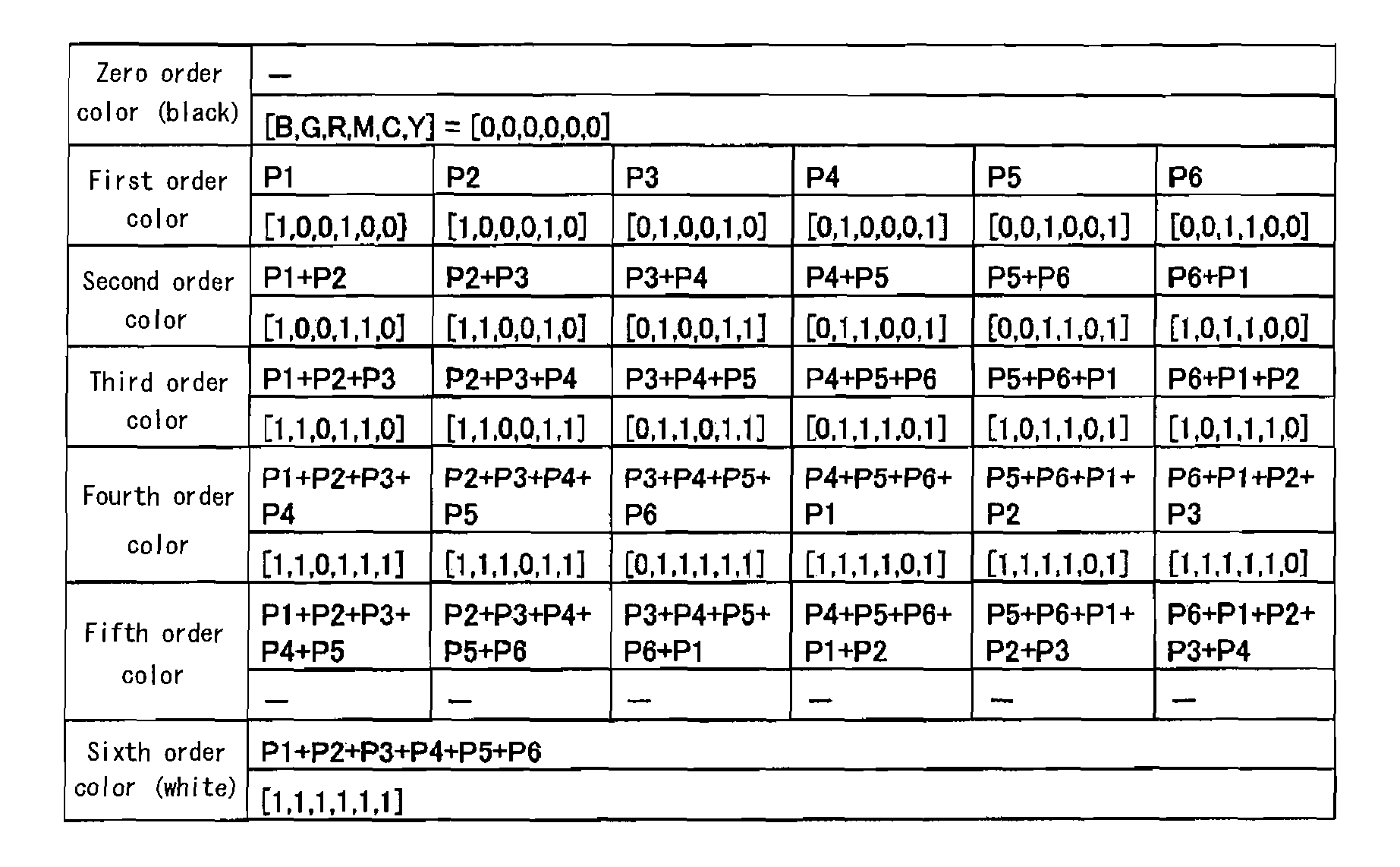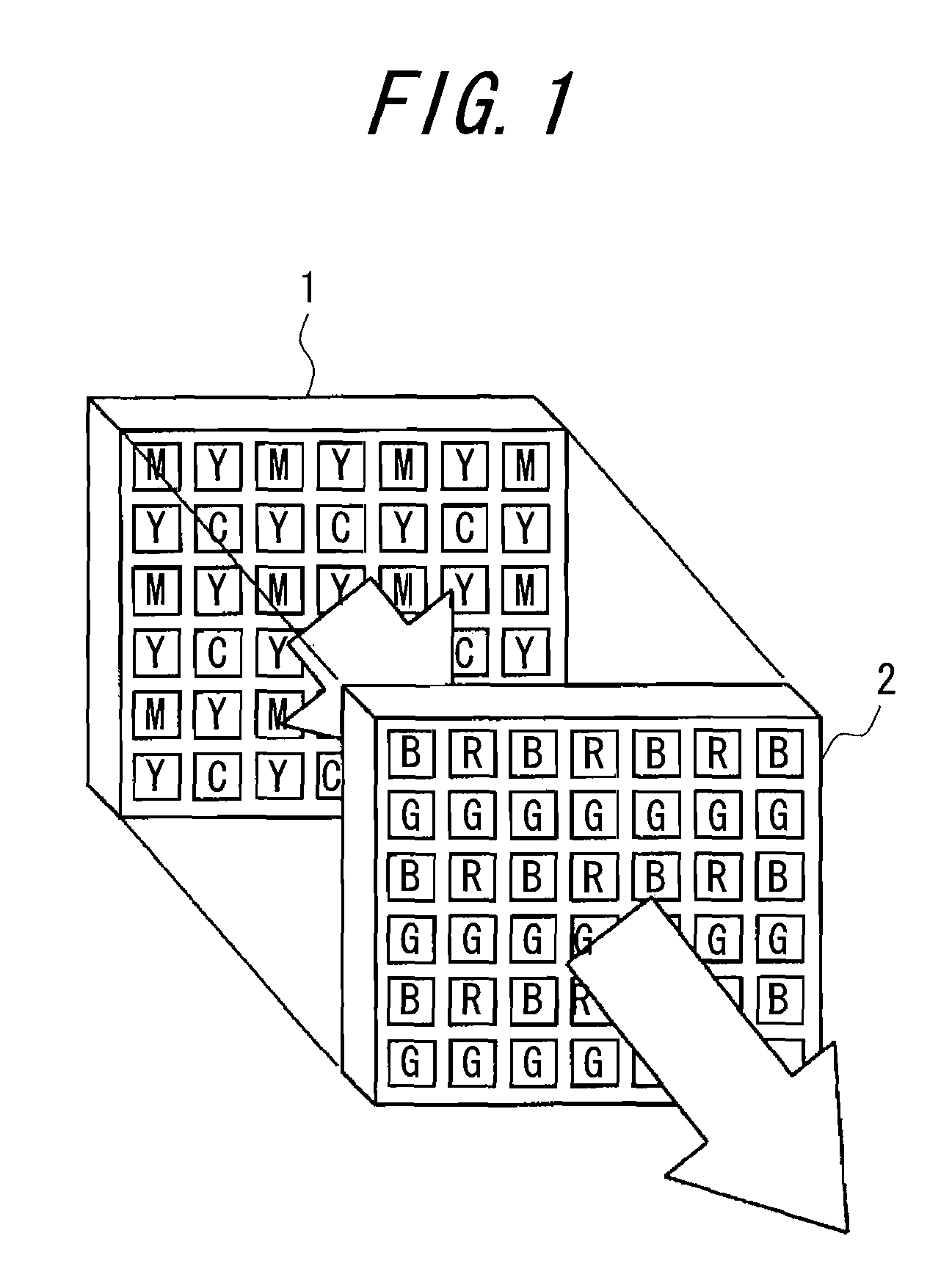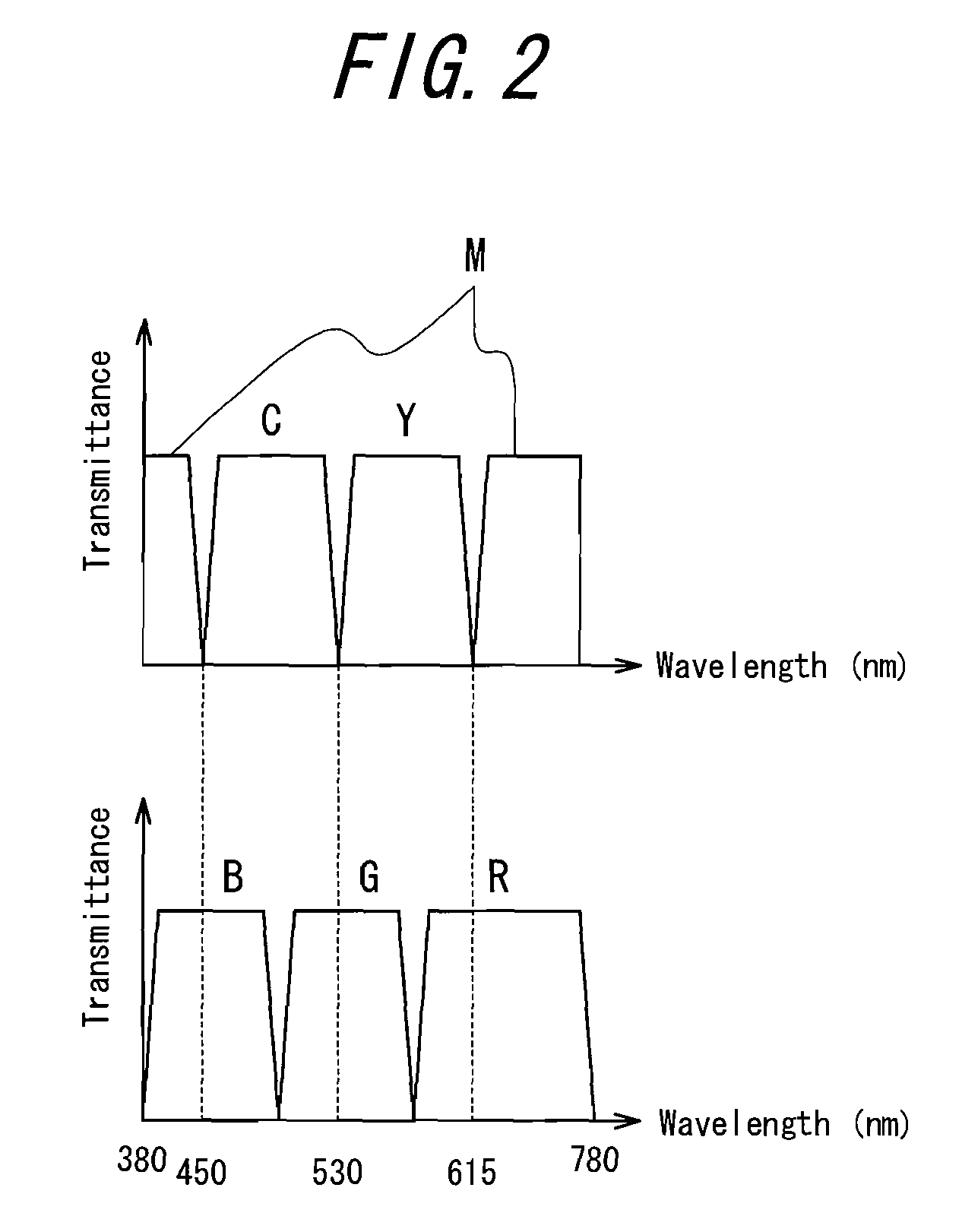Multi-primary color display method and device
a color display and primary color technology, applied in the field of multi-primary color display methods and devices, can solve the problems of not being able to reproduce all colors existing in nature, not being able to reproduce bright colors with high saturation, and limited color range which can be expressed by additive color mixing of three primary colors, etc., to achieve the effect of not decreasing resolution, reducing time resolution, and simplifying the devi
- Summary
- Abstract
- Description
- Claims
- Application Information
AI Technical Summary
Benefits of technology
Problems solved by technology
Method used
Image
Examples
first embodiment
[0167]FIG. 10 to FIG. 13 show a first embodiment. FIG. 10 is a figure showing a schematic constitution of a multi-primary color display device. FIG. 11 is a figure showing a detailed constitution of the image projection device of FIG. 10. FIG. 12 is a figure showing a detailed constitution of the rotary filter of FIG. 11. FIG. 13 is a figure showing a detailed constitution of the spatial optical modulation element of FIG. 10.
[0168]As shown in FIG. 10, the multi-primary color display device according to the present embodiment includes: a three primary color / six primary color signal converting section 5 as multi-primary color signal conversion means adapted to receive video signals of conventional RGB three primary colors or video signals based on XYZ tristimulus values in the CIE1931XYZ color system and to convert the received signal to video signals of six primary colors expressed by C1 to C6; an image projection device 6 as first image forming means adapted to receive video signals...
second embodiment
[0176]FIG. 15 and FIG. 16 show a second embodiment. FIG. 15 is a figure showing a schematic constitution of a multi-primary color display device. FIG. 16 is a figure showing an example a test chart image which is displayed at the time of position adjustment.
[0177]As shown in FIG. 15, the multi-primary color display device according to the present embodiment is constituted such that in place of the position adjusting mechanism section 8 in the first embodiment, an image geometric correction section 25 as geometric conversion means, a correction data calculation section 26, and imaging device 27 are provided, and the position correction between the image projection device 6 and the spatial optical modulation element 10 is automatically performed. The other constitution is the same as the first embodiment, and hence the description thereof is omitted.
[0178]In the following, the position correction in the present embodiment will be described. First, in the first step, a test chart image...
third embodiment
[0183]FIG. 17 and FIG. 18 show a third embodiment. FIG. 17(a) and FIG. 17(b) are a schematic side view and front view showing an entire constitution of a multi-primary color display device. FIG. 18 is a figure showing an example of a pixel arrangement and a positional relation of the first spatial optical modulation element and the second spatial optical modulation element of FIG. 17;
[0184]As shown in FIG. 17, the multi-primary color display device according to the present embodiment includes: a white fluorescent lamp 31 adapted to emit white light; a parabolic mirror 32 adapted to reflect the light emitted by the white fluorescent lamp 31, and to make the reflected light into substantially parallel light; a light guide plate 33 adapted to guide the light reflected by the parabolic mirror 32, as substantially uniform light, to the entire surface of a first spatial optical modulation element 34 as will be described below; the first spatial optical modulation element 34 adapted to mod...
PUM
 Login to View More
Login to View More Abstract
Description
Claims
Application Information
 Login to View More
Login to View More - R&D
- Intellectual Property
- Life Sciences
- Materials
- Tech Scout
- Unparalleled Data Quality
- Higher Quality Content
- 60% Fewer Hallucinations
Browse by: Latest US Patents, China's latest patents, Technical Efficacy Thesaurus, Application Domain, Technology Topic, Popular Technical Reports.
© 2025 PatSnap. All rights reserved.Legal|Privacy policy|Modern Slavery Act Transparency Statement|Sitemap|About US| Contact US: help@patsnap.com



